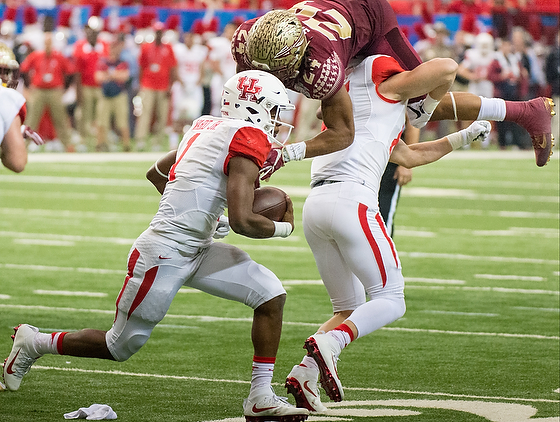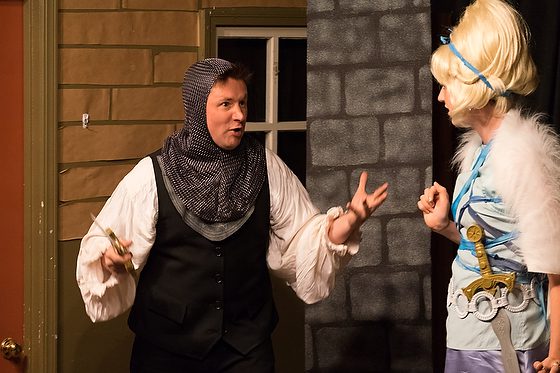| Fujifilm X-E2, Fuji XF 55-200mm, ISO 3200, ƒ/3.9, 1/70 |
Do your stories/photos seem flat to you? I know many times, after working so hard on a story/photo, I feel like the results were not capturing something, but what was I missing?
Now when I cover sports, a short story where the winning team must overcome obstacles to win, I can see the problem with a balanced coverage. The teams just never put forth the effort that visually showed greatness.
 |
| Nikon D4, Sigma 120-300mm ƒ/2.8 DG OS HSM S, Sigma TC-2001 2x, ISO 12800, ƒ/5.6, 1/2000 |
Over the past few weeks, I received beautiful emails saying my daughter’s performance in the musical Into the Woods. At the same time, I would be proud of her no matter what as her dad; I was proud of her as an artist.
 |
| Nikon D5, Sigma 120-300mm ƒ/2.8 DG OS HSM S, Sigma TC-2001 2x, ISO 9000, ƒ/5.6, 1/400 |
Some of those emails started to capture the nuance she could deliver in her performance. One said my daughter was “making the part your own, not a stereotype or a copy of another actor’s work, but an artful blending of jagged, mean, ugly, playful, quirky, needy, and finally, channeling the almighty in condemning flawed humanity to tend the garden alone. Your character arc was spot on.”
So precisely, what is a character arc? It is the transformation or inner journey of a character throughout the story. At the same time, many things may happen to a character in a theater performance as an actor’s portrayal. But unfortunately, the audience isn’t allowed to experience those changes.
Experiences the changes in the character are often the missing secret ingredient to a compelling story.
 |
| Nikon D5, Sigma 120-300mm ƒ/2.8 DG OS HSM S, Sigma TC-2001 2x, ISO 1250, ƒ/5.6, 1/4000 |
When I often work with an NGO to tell their story, I must interview someone before the story’s climax. I often say to a success story, so I have missed the opportunity to show this main character struggling.
What I can do and often do is have them tell me about what it was like before. I want the subject of the story to articulate the struggle. After hearing this part of the interview, I can get a b-roll of others also going through this. I should be able to find this because most NGOs are raising funds to help others through their success story.
 |
| Nikon D3s, AF-S NIKKOR 28-300mm f/3.5-5.6G ED VR, ISO 2200, ƒ/5.6, 1/100 |
The main plot for most of these stories I am doing is that the main character cannot overcome opposing forces because they lack the skills, knowledge, resources, or friends.
My audience is who I am appealing to be the ones who help with supplying the skills, knowledge, and resources and being the friend to help others like this person to overcome their obstacles. I must do an excellent job of articulating why they cannot do it alone.
The last part of the story shows the changes in the main subject. Today, for example, because of the changes they have gone through, their children can go to college and have a better life than the main subject.
The story is often flat because I have done a poor job of capturing the struggle and problems of the main character.
Don’t be the storyteller who only searches for those who take little effort on you to communicate their struggle. The stereotype is where you search for only stories that are often cliché. Instead, you find a person with significant physical deformities to help you capture the battle, so you don’t have to work at it as hard.
Everyone has a story if we take the time to get to know them!


